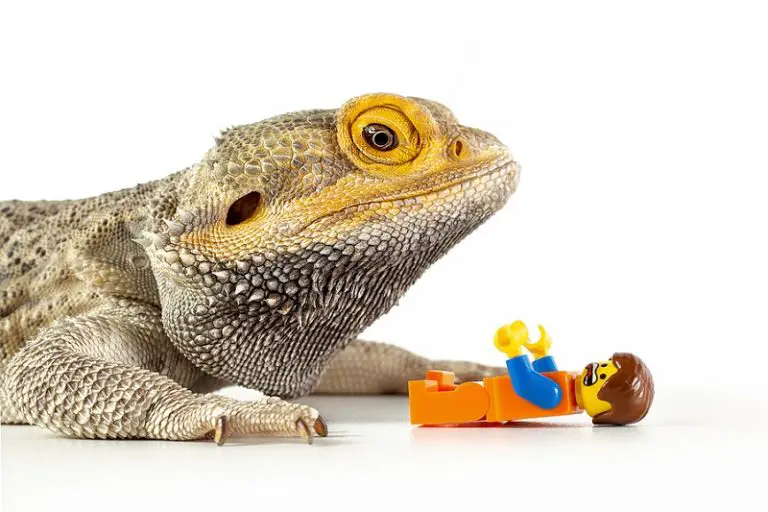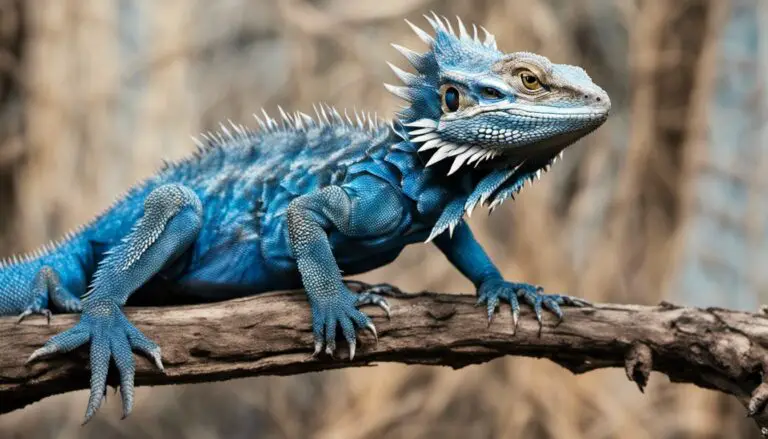How to Tell the Gender of a Bearded Dragon: A Quick and Easy Guide
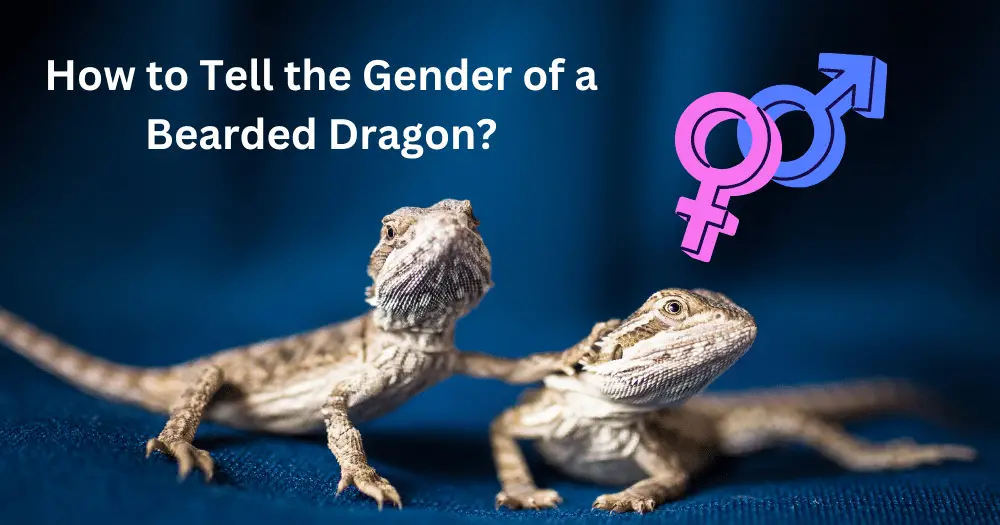
Curious about the gender of your bearded dragon? Look no further! In our informative guide, “How to Tell the Gender of a Bearded Dragon,” we’ll walk you through the key characteristics and signs that can help you determine whether your scaly friend is a male or female. Get ready to unravel the mystery and understand your bearded dragon better!
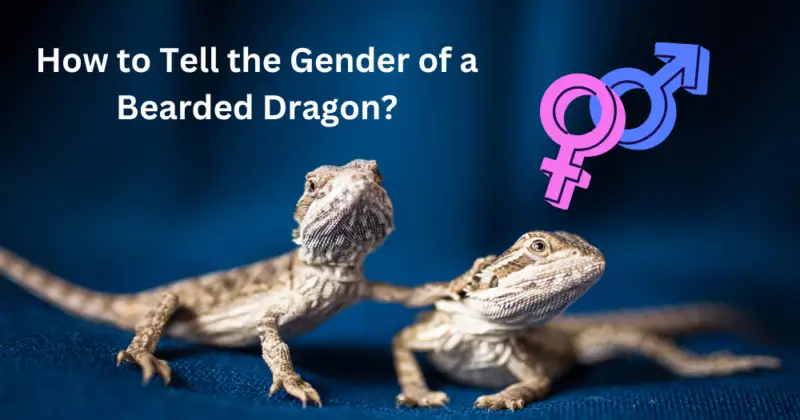
Contents
Table of Contents
Determining Age

One aspect to consider when trying to tell the gender of a bearded dragon is its age. Knowing the age of your bearded dragon can help you determine the appropriate time to start examining gender characteristics. There are a few methods that can give you a rough idea of the age of bearded dragons; however, they don’t provide an exact birth date.
Sexual maturity in bearded dragons typically occurs around one year old. Before this age, it may be challenging to determine gender accurately, particularly when examining younger dragons. Let’s look at some guidelines on when to begin considering a bearded dragon’s gender based on age:
- 4-5 months: At this age, some gender characteristics start to develop, but they might not be very pronounced, making it difficult to identify the sex of the bearded dragon accurately.
- 6-8 months: Observing the gender of a bearded dragon becomes more accurate after it turns six to eight months old. At this stage, the sexual characteristics become more noticeable, allowing for a more reliable determination of the dragon’s gender.
- 1 year: Bearded dragons are considered to be fully sexually mature at one year old, and identifying their gender at this stage should be confident and accurate.
Keep in mind that these age markers are estimated and may vary between individual bearded dragons. To better understand how to tell the gender of your bearded dragon, start by observing their characteristics after six to eight months of age, and be more confident in your determination when they reach full sexual maturity at one year old.
Physical Differences

Head Size and Shape
Male bearded dragons tend to have wider, thicker heads, while females generally have long, narrow heads. In addition to this, bearded dragons have triangular-shaped heads, but females usually have thinner skulls and smaller beards than their male counterparts.
Tail Size and Shape
The tail size is another notable physical difference between male and female bearded dragons. In males, the tail is typically thicker and wider, especially around the region of the tail base. On the other hand, female tails tend to be narrower with a more slender shape.
Body Size and Weight
Males and females have minor differences in the length and weight. Usually, males are slightly larger in size and weight when compared to females. However, these differences are not as prominent as the differences in their head and tail sizes.
Use of Spikes
Both male and female bearded dragons have spikes on their bodies, primarily around their head, neck, and sides. However, the usage of spikes can differ between the two genders. Males tend to use their spikes more frequently to assert dominance or during mating displays, whereas females will utilize their spikes for defensive purposes.
Hemipenal Bulges and Femoral Pores
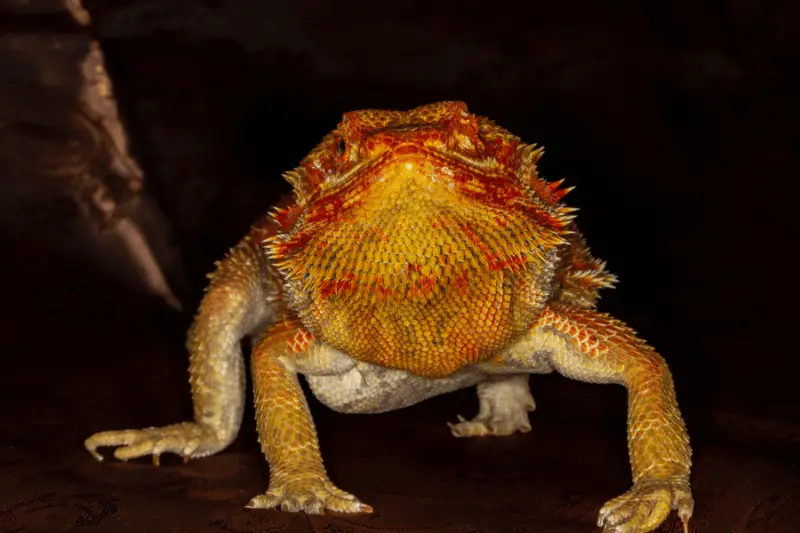
Bearded dragons have distinctive physical features that can help determine their gender, including hemipenal bulges and femoral pores. This guide will discuss these features and how to identify them in male and female bearded dragons.
Identifying Hemipenal Bulges
Hemipenal bulges are a key feature in determining a bearded dragon’s gender. Located near the base of their tail, a hemipenal bulge is created by the presence of hemipenes, which are male reproductive organs.
- Gently lift your bearded dragon’s tail and examine the area near the vent, which is the cloakal opening on the underside.
- Male bearded dragons will typically have two distinct bulges on either side of the vent, while females will only have one or none at all.
- If the bulges are not clearly visible, try using a flashlight to shine light on the area to make them more apparent.
Note: Young bearded dragons may have less pronounced hemipenal bulges, making it more challenging to determine their gender.
Recognizing Femoral Pores
Femoral pores are small glandular openings on the underside of a bearded dragon’s body, specifically on their back thighs. They are used by both male and female bearded dragons to secrete pheromones, but they are more pronounced in males, particularly around mating season.
- Examine the underside of your bearded dragon’s back legs for the presence of femoral pores.
- Males will usually exhibit a row of larger, more noticeable pores, while females will have smaller, less visible pores or none at all.
- During mating season, males will secrete a waxy substance from their femoral pores, making them even more apparent.
It is essential to handle your bearded dragon with care during this process and return them to a relaxed position when finished. Identifying the sex of your bearded dragon can help you provide the most appropriate care for their needs and understand their behaviors better.
Behavioral Differences
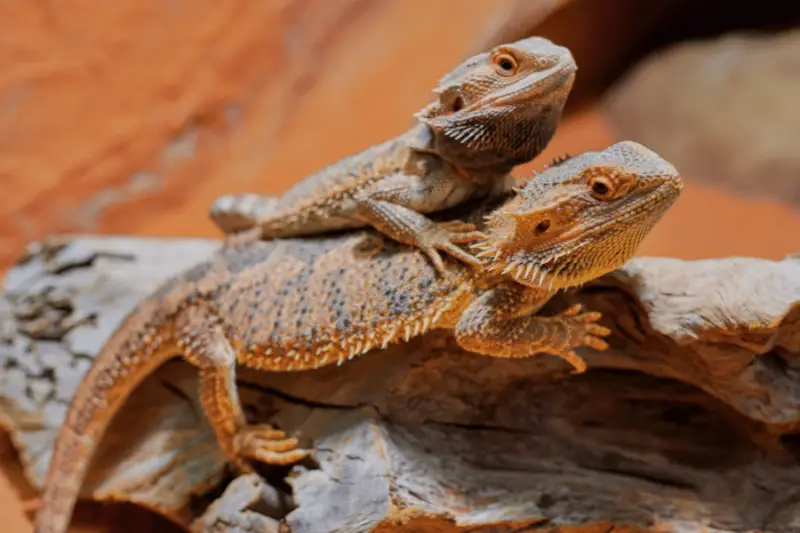
Aggressive Behavior vs Submissive Behavior
Male bearded dragons are generally more aggressive than their female counterparts, particularly during the mating season. This behavior is an adaptation in response to hunting and territory defense activities. Males may display a range of dominant behaviors such as bobbing their heads, puffing out their beards, and their use of spikes.
In contrast, female bearded dragons tend to exhibit more submissive behaviors, such as head tilts and lowered posture.
Territory and Mating Season
Both male and female bearded dragons exhibit territorial behavior, but males are typically more aggressive in defending their territory. During the mating season, males often compete to attract females or establish dominance in a given area.
As a result, their behavior becomes more aggressive, including head-bobbing, biting, and chasing. Conversely, females may display submission during mating by raising their tails or lying flat on the ground.
Black Bearding and Arm Waving
Black bearding is a common behavior exhibited by male bearded dragons to show dominance or aggression. By darkening their beards, they signal to other males that they are a threat, which can be especially prevalent during the mating season.
Conversely, arm waving is a submissive behavior often used by females and younger dragons to communicate submission or non-threatening posture. This behavior is characterized by a slow, gentle wave of one or both arms, indicating to potential aggressors that they are not a threat.
In summary, observing behavioral differences between male and female bearded dragons, such as aggression, territoriality, and communication displays like black bearding and arm waving, can help distinguish between the sexes.
It’s important to recognize these behaviors and adapt your handling techniques to ensure a positive experience for you and your bearded dragon.
How To Identify A Bearded Dragon’s Gender !! BEST TIPs!!
Identifing Gender Methods
Flashlight Method
One of the simple and non-invasive methods to determine the gender of a bearded dragon is the flashlight method. This involves shining a light through the base of the tail to help identify the presence of the hemipenal bulges that serve as a useful indicator of your bearded dragon’s gender. To perform this test, gently lift your bearded dragon while ensuring that it’s relaxed and in a comfortable position.
Switch on a flashlight and direct the light on the underside of the tail base. Observe the silhouettes through the tail’s skin. Male bearded dragons possess two visible bulges, while females have only one central bulge.
Keep in mind that younger lizards or those who haven’t reached sexual maturity may present less distinct bulges, making it difficult to definitively determine their gender via the flashlight method.
Seeking Advice from a Breeder
Bearded dragon breeders are often experienced in determining the gender of bearded dragons and can provide valuable input and guidance on determining the gender of your lizard. Their expertise in handling various age groups and types of bearded dragons allows them to identify subtle differences between males and females, ensuring a higher level of accuracy.
Additionally, breeders might be familiar with other Identifying Gender methods, such as examining femoral pores or identifying behavior patterns unique to male or female bearded dragons.
Collaborating with an experienced owner or breeder not only helps in precisely determining your bearded dragon’s gender but also ensures that the Identifying Gender process is conducted safely without causing distress to your pet.
While the flashlight method is a popular choice for Identifying the Gender of your bearded dragon at home, turning to an experienced breeder’s advice can serve as a practical alternative, ensuring a higher level of accuracy and providing additional support in understanding your pet’s unique characteristics. As you learn to identify the gender of your bearded dragon, you can better cater to its specific needs and develop a stronger bond with your scaly friend.
Unique Considerations
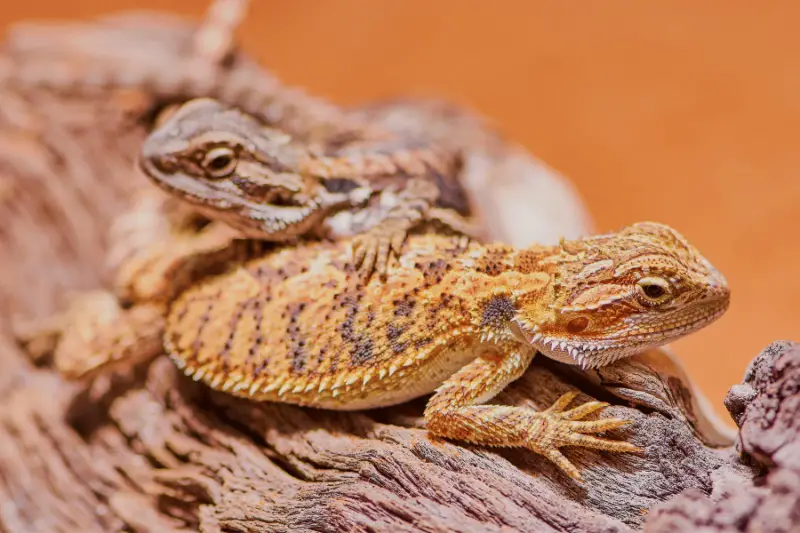
Identifying Gender of a Baby Bearded Dragons
Another method to determine the gender of a baby bearded dragon is by using the flashlight test. This technique involves holding the baby gently, lifting its tail, and shining a light through the tail to reveal any hemipenal bulges. This method should be done with caution, as it can potentially be stressful for the young reptile.
Can Bearded Dragons Change Gender?
A commonly asked question is whether or not bearded dragons can change gender. While some reptiles are known to exhibit sex reversal in certain circumstances, there is no scientifically documented evidence that bearded dragons can change their gender. It is a common misconception that bearded dragons may change sex in response to environmental factors or other stressors.
Their gender is determined by their genetic makeup and external factors like temperature can influence sexual differentiation during the incubation period of the eggs. However, once a bearded dragon is hatched, their gender remains consistent throughout their life.
Conclusion: How to Tell the Gender of a Bearded Dragon

In conclusion, understanding the gender of your bearded dragon requires careful observation of physical traits, such as hemipenal bulges and femoral pores. For baby bearded dragons, these traits can be more difficult to identify, but patience and the flashlight test technique may assist in determining their sex.
Finally, it is important to note that bearded dragons do not change their gender post-hatching, and this misconception may be attributed to the unique reproductive characteristics of other reptiles.

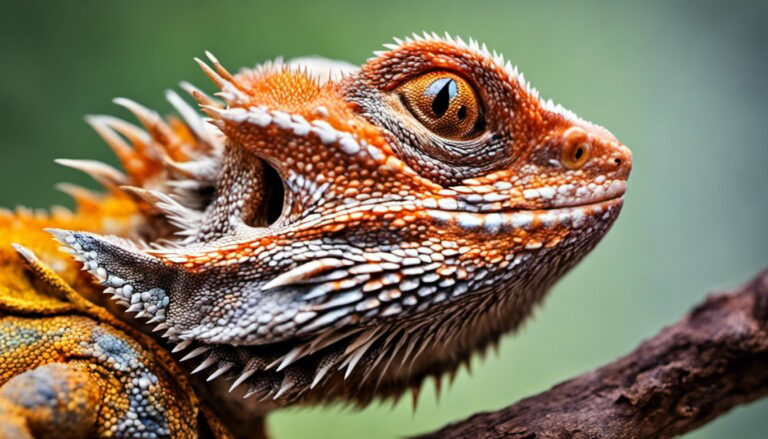
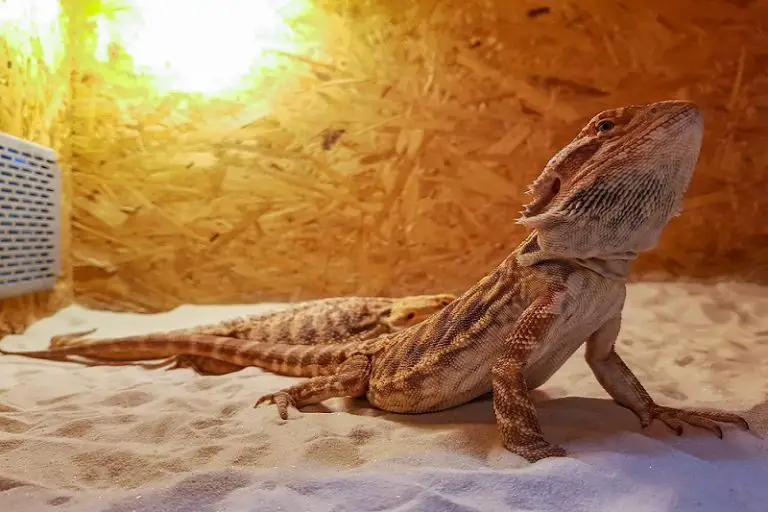

![How Many Mealworms To Feed A Bearded Dragon? [Read Now]](https://allourcreatures.com/wp-content/uploads/2021/10/How-Many-Mealworms-To-Feed-A-Bearded-Dragon-2.jpg)
